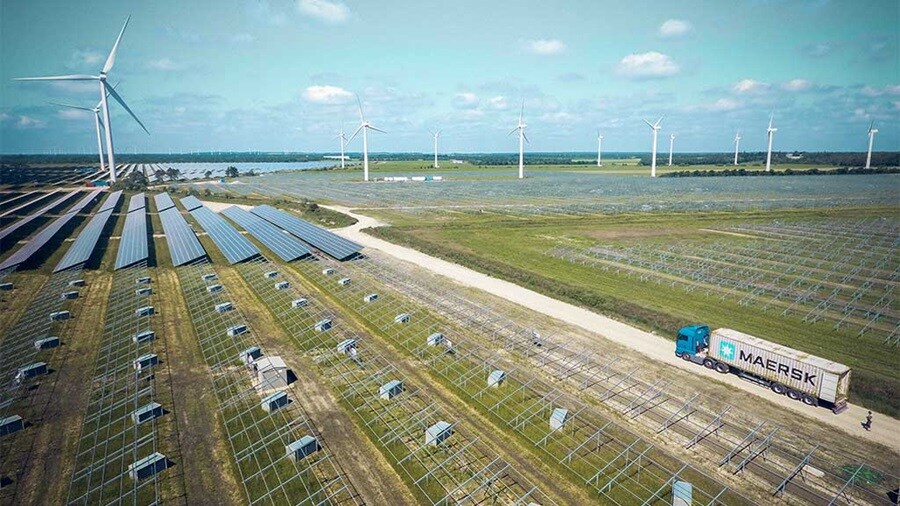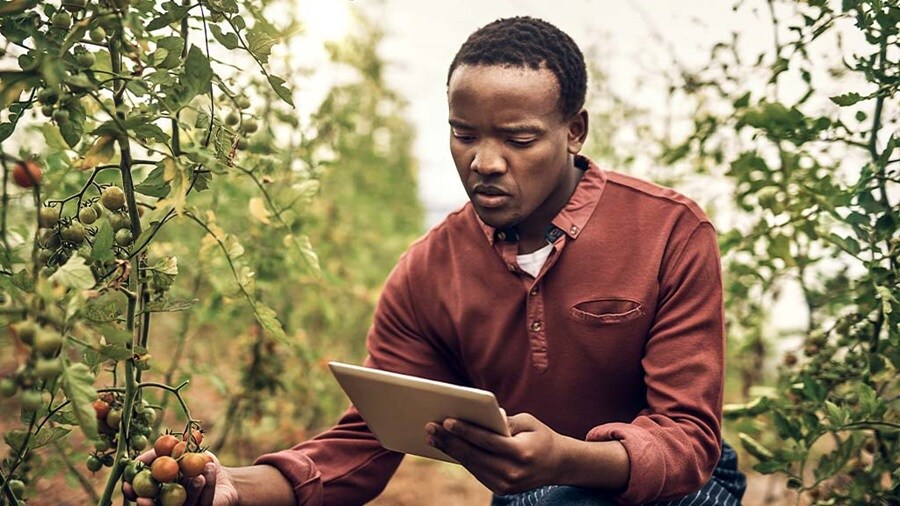A single lapse in cold chain control can put a season’s margin at risk, whether it’s fresh produce on exports corridors or vaccines headed to last mile clinics. With the African Continental Free Trade Area (AfCFTA) unlocking billions of dollars in cross-border trade, success will go to those who can provide an unbroken cold chain from field to freight.
From grapes and avocados to life-saving medicines, Southern Africa’s perishable goods are in high global demand. However, in a region where infrastructure gaps, high energy costs, and skills shortages are still prevalent, the challenge is no longer how to increase exports but rather, how to increase exports the right way. For exporters, that means meeting tighter compliance rules from the European Union (EU) and China. For policymakers, it means accelerating infrastructure development and harmonising standards. For cold chain business leaders, it means using technology to transform temperature control into a competitive edge.
The market is heating up
In response to the growing demand for transporting of perishable goods, cold chain logistics companies in South Africa are expanding their operations. Exports of perishables, including grapes, citrus fruits, and avocados, helped push total export values to USD 13.7 billion in 2024. However, beyond sheer volume, exporters must now navigate a patchwork of cold treatment rules — whether it’s Europe’s strict temperature controls or China’s requirements as buyers expect flawless compliance. Buyers in Europe, Asia, and North America demand traceability, real-time tracking, and consistent cold chain management.
Zimbabwe, meanwhile, is seeing a parallel boom to the logistics trend in South Africa. Blueberries and citrus, meat, and pharmaceuticals accounted for USD 9.05 billion of its foreign exchange earnings in 2023. However, high spoilage rates linked to underpowered cold infrastructure remain a drag.
Trade deals are turning up the pressure
In cold chain logistics, the existence of a single broken link has the potential to erase an entire season's profit. That’s why trade agreements like the African Continental Free Trade Area (AfCFTA) and the Tripartite Free Trade Area (TFTA) are crucial for growth, competitiveness, and trust in the market. According to UNCTAD's Economic Development in Africa Report 2024 full AfCFTA implementation could create a USD3.4 trillion continental market, providing unprecedented opportunities for exporters who can ensure uninterrupted cold delivery. However, weaknesses in infrastructure — including inadequate cold chain energy capacity, the lack of dedicated South Africa–Africa transport links, and gaps in digital systems — continue to inflate trade costs by as much as 50%. Exporters, cold chain operators, and policymakers must close these gaps quickly. The payoff is significant: Small Medium – sized Entreprises (SMES), often the most agile and innovative players, are poised to grow if they are provided with the necessary trade finance, risk management tools, and infrastructure access. Those who act now will set the standards, earn customer trust, and dominate tomorrow's premium markets.
South Africa’s agreements with China and the EU now emphasize on infrastructure modernization, while regional logistics capabilities provide seamless trade facilitation.
In Zimbabwe, the ExAFS Initiative (supported by Afreximbank’s USD 2 billion funding) is focused on building centralized cold storage hubs. Meanwhile, the India-Zimbabwe JTC Agreement promotes digital compliance tools for real-time temperature monitoring.
Cold chain regulations continue to shape the industry
The 2025 regulations governing perishable exports mark a major turning point for South Africa’s logistics sector. They mandate real-time temperature monitoring and PPECB certification for all perishable exports. These measures are directly enhancing trust across the South African supply chain.
Among these, ensuring a consistent energy supply is a top concern, prompting greater support for solar-assisted cold storage and mixed-energy reefer systems.
Zimbabwe is following suit by adopting the African Union (AU) food safety guidelines and participating in Africa CDC-backed programs to improve vaccine storage infrastructure.
Infrastructure and skills gaps: a perpetual bottleneck
Despite the promise, key hurdles remain. Cold chain logistics infrastructure in South Africa remains patchy. It’s marked by inconsistent availability of refrigerated transport, certified storage facilities, and reliable regional connectivity. Energy costs are among the highest in the world, and logistics skills, especially in remote areas, still lag. Seasonality adds another layer of difficulty: citrus exports drive peak demand for just four months of the year, making it hard to sustain investment in new projects. To keep infrastructure viable year-round, operators must find creative solutions — such as dual-use cold stores that can flex between chilled and frozen cargo.
Yet there are signs of smart problem-solving. Joint efforts such as the revitalisation of Zimbabwe’s National Railways (NRZ) rail network are helping to close critical transport gaps. Local solutions are also closing these gaps through investment in infrastructure and workforce development.
Solar-powered cold rooms, once considered niche, are now increasingly mainstream. Digital tools, including Internet of Things (IoT)-based temperature sensors and blockchain traceability, are helping bridge the accountability gap in South Africa's supply chain.
Who’s getting it right?
Amid these challenges, some of South Africa’s logistics players are setting the gold standard. Durban’s Cato Zulu Logistics is ramping up its capabilities with modernised storage facilities and advanced distribution centers built for precision cooling. With real-time digital monitoring systems, they ensure every fruit and vaccine maintains its critical temperature until its final destination.
Then there’s Belcon Logistics Park, located at a strategic transport junction. Belcon isn’t just a warehouse, it’s a cold chain command centre. With facilities for cross-docking, advanced inventory control, and real-time analytics, it's quickly becoming a key node for logistics in South Africa.
South Africa’s pharmaceutical sector remains a benchmark in the supply chain, with GDP-certified storage and consistently monitored processes.
Zimbabwe’s turning point
Zimbabwe’s cold chain is at an inflection point. Decades of underinvestment have taken a toll, but recent reforms are promising. Exporters are now focusing on centralised cooling stations. High-value crops like blueberries and macadamia nuts are also reshaping the conversation around quality control.
Like the logistics sector in South Africa, the key to this shift is skills development. Donor agencies and private investors are supporting training programs, equipping logistics professionals with expertise in compliance, digital systems, and modern distribution.
Technology with a thermometer

Whereas today's operations use smart sensors and automated alerts, cold chain logistics once made do with unreliable secondary power sources and error-prone manual record-keeping. Today, real-time data tracking, predictive analytics, and AI-powered routing are becoming standard.
Logistics companies in South Africa and Zimbabwe are integrating blockchain to track the entire cold chain journey from field to freight. This improves traceability, speeds up audits, and helps exporters prove compliance with EU and FDA guidelines.
Sensor-driven automation and smart reefer trucks are minimising human error, cutting waste, and reducing fuel costs. These tools aren’t just about compliance. They’re about efficiency, reputation, and trust.
An opinion from the ground
Talk to any long-haul cold truck driver, and you’ll hear the same theme: border delays, inconsistent road conditions, and port congestion. But technology is helping. Integrated systems are now alerting operators to temperature fluctuations and enabling remote intervention before spoilage occurs.
The use of cloud-based platforms is also transforming South Africa's supply chain. Both importers and exporters can plan, reroute, or react immediately thanks to its real-time visibility.
Reliable logistics are the backbone of successful trade. Integrated logistics solutions in South Africa are designed to support cold chain reliability, compliance, and end-to-end transparency.
Small players, big opportunities
Small and medium-sized exporters are the hidden giants in the cold chain logistics industry in South Africa. Whether it's a tomato farmer in Mutare or a seafood distributor in Port Elizabeth, SMEs are increasingly entering South Africa’s supply chain.
Support programs under the African Continental Free Trade Area (AfCFTA) and donor partnerships are helping them scale. The sector, which is agile, aspirational, and tech-savvy, might be the most transformative for the future of cold chain logistics in Southern Africa.
Logistics in South Africa: the road ahead
Southern Africa’s cold chain industry is at a tipping point. Export demand is rising, technology is more affordable than ever before, and trade agreements are lowering barriers to entry. However, without decisive action, infrastructure gaps and compliance failures will continue to cost the region billions.
For exporters: Invest in compliance-ready cold storage, real-time monitoring, and integrated logistics partnerships now to safeguard product quality and market access.

For policymakers: Prioritise energy reliability, cross-border harmonisation, and incentives for cold chain investment to turn infrastructure gaps into growth opportunities.
For cold chain business leaders: Collaborate on shared storage hubs, adopt blockchain and Internet of Things (IoT) tracking technology, and train the next generation of skilled operators to ensure reliability across every link.
The future of Southern Africa’s perishable exports depends on trust—trust that the first and last miles will meet the same high standards. By acting now, we can build a supply chain that delivers goods, reputation, revenue, and resilience.
Ready for the next step?
Cold chain logistics in South Africa has evolved from being an extravagance to a vital supply chain advantage. For agribusinesses, pharma firms, and freight operators, now is the time to invest in quality, compliance, and connectivity.
Be ready to strengthen your supply chain to go all the way! Discover more with Maersk Logistics Insights, and learn more about Cold Chain Logistics. For more logistics trends and insights, read and download The Logistics Trend Map.
How can logistics help you grow?
Trade is the ultimate connector, expanding businesses across oceans and borders. How can companies stay relevant, predict trends, adjust to their customers’ needs and, at the same time, expand?
Learn more about how Maersk can help with growth.
Sign up to The Logistics Pulse newsletter
You did it, welcome onboard!
We're sorry, but there was a problem sending your contact request.
Please review the form fields and ensure all required information is provided correctly. If the issue persists, please contact our support team for further assistance.
Sign up to The Logistics Pulse newsletter
Receive our insights directly in your mailbox by signing up through this form and enter a world of truly integrated logistics. Get inspired by our selection of articles that help you navigate supply chains, understand industry trends, and shape your logistics strategy. You can unsubscribe anytime.
I agree to receive logistics related news and marketing updates by email, phone, messaging services (e.g. WhatsApp) and other digital platforms, including but not limited to social media (e.g., LinkedIn) from A. P. Moller-Maersk and its affiliated companies (see latest company overview). I understand that I can opt out of such Maersk communications at any time by clicking the unsubscribe link. To see how we use your personal data, please read our Privacy Notification.
By completing this form, you confirm that you agree to the use of your personal data by Maersk as described in our Privacy Notification.













